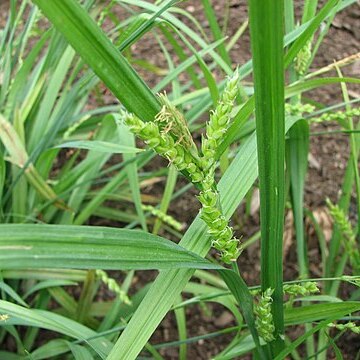Tufted, 1.5–6 dm; lvs green or glaucous, the basal ones to 15 mm wide, the bracts to 10 mm wide; staminate spike 1–2 cm, usually about equaling or somewhat overtopping the uppermost pistillate one; pistillate spikes 2–4, 1.5–4 cm, densely many-fld, widely separate, the lowest often nearly basal on exsert peduncles, the upper on progressively shorter peduncles or sessile; bracts foliaceous, surpassing the stems; pistillate scales ovate, a third to half as long as the perigynia, acute or with an awn to 1 mm; perigynia ellipsoid, 3–5.3 mm, two-fifths to half as thick, finely many-nerved, beakless; achene ± concavely trigonous. Wet woods or swamps or moist fields; Mass. and Ont. to s. Ind. and Mo., s. to N.C. and Ark. (C. glaucodea)

